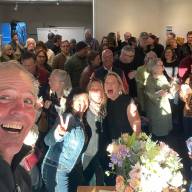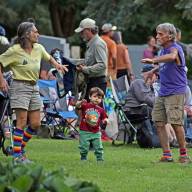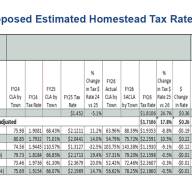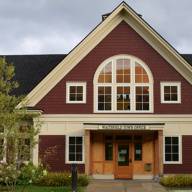Back in New York when I was growing up in the 1960s, if someone asked where you were from the answer was something like Ireland or Greece or Poland or France or China. Now living here in the Mad River Valley, my experience is that when you get asked where you are from it is usually to find out if you were born in the beautiful state of Vermont or if you came from New York or New Jersey or Connecticut or Massachusetts. I am from the latter ilk, a transplant. I moved from New Jersey to Vermont over eight years ago. A newbie for sure.
It was a huge cultural shift for me, and I have learned much about the wonders of this state beyond mountains, rivers, forests, and a robust climate of civic duty. My learning curve had quite an arc. I knew I wanted to live here but “here” was so general that my real estate agent begged for some parameters. Anywhere in The Valley was my reply. My husband and I knew The Valley, of course, because we were skiers and hikers vacationing here for weeks at a time over many years. I knew where to get a good meal or hiking boots. I soon realized I barely knew the heart of where I had chosen to uproot my life and move to.
The real estate agent pointed out the four corners as we drove toward Warren. In time, I learned that this was the intersection where Brook Road turns into East Warren Road and Airport Road becomes Roxbury Mountain Road. At this spot sits the East Warren Community Market. It is located in a quaint white building with a covered porch that dares you to wonder about its history. In its current iteration, it houses a store where every culinary need can be satisfied. It is home to the local radio station, WMRW, where you may hear your neighbors playing carefully selected music or broadcasting a unique program. The radio station is always playing in the market as you shop for organic produce or hand-crafted gift items. In the entrance is a community bulletin board. It is there you will find postings for services or classes, or help needed, or a lost pet. Sometimes I recognize the names and it makes me feel good and at home.
Once I stood on the porch of the old building instead of darting back to my car, I looked out at the fields and mountains and thought the view had not changed much since it was first built. I was, in fact, wrong about that. East Warren was a community of its own, intentionally settled away from the river as it was deemed safer. Many of the structures from then are long gone. There was once a church, a stagecoach stop, and other buildings. I’m told parts of their foundations may still exist. According to historical records (compiled by Katherine Hartshorn) it was agricultural and thriving until the mills began and shifted commerce to river sites.
Children have attended school in small one-room schoolhouses throughout Warren since 1805. In 1885, a town school system was founded which unified the districts. This building, known as the East Warren Schoolhouse was one of many schoolhouses in the area. It continued to be a school into the 1960s when an increase in population necessitated the construction of the larger Warren school. After that it housed several community businesses and finally today, the lovely East Warren Community Market. I was intrigued by the school. I could picture youngsters with wool coats carrying books into the cozy grand old schoolhouse. A true feeling of community must have prevailed in the small space. All that history in one charming building. What was it like to teach or go to school there?
Betsy Elliott, is the daughter of Mary Jane Ketchum and Rudolph Elliott; and the niece of George and Nini Elliott, who owned the land called the Four Corners. (Also worth remarking is that she is a cousin of Sir Winston Churchill). Ms. Elliott’s mother was a teacher in the district and her grandmother cooked school lunches. Ms. Elliott had attended the one-room schoolhouse through the sixth grade. She told me there were approximately 10 students of all different ages. She recalled some special times at the school. On Veterans Day, the children would walk to the graveyard near the school, decorating soldiers’ graves with flags. She told of school plays and of Christmas celebrations. She said there was a big decorated Christmas tree in the classroom that came crashing down one year. They had recess outside and in the warm months played softball. In the winter, they dug tunnels through the snow or played ‘king of the mountain’ on the huge mounds. When Ms. Elliott was a student there, the addition of the indoor bathrooms had already been made. There was a coat room to the left as you came in where the children would remove their boots, coats, and hats to store them until recess. Ms. Elliott recalled that the upstairs level of the building was used for hunters’ dinners and other community events. By the sound of joy and amusement in her voice, one could assume her years earning an education in the old schoolhouse were pleasant ones and I was glad for the opportunity to hear them.
Now when I go into the old East Warren Schoolhouse to buy my Valley Reporter and the many things I always seem to need, I will think of those children sitting around their teacher planning for their play or mastering a math skill. I will think of the parents of the children: blacksmiths, teachers, shopkeepers, or hardworking farmers who tended this land despite its harsh weather. In this schoolhouse, they got the education they needed to get through life.
It seems that almost every day I learn something new about the Mad River Valley. My life has been exponentially informed and enriched by living here. There is something in the water and the air, or maybe it’s just being afforded the time to stand on the porch of an old building and feel its history coursing through you. Every day I will stop and look and wonder because the stories are everywhere. Ask someone a question and you will learn. The more I learn, the more I feel I am home. I think the next time someone asks where I am from, I will say here.
To send story ideas or buy the fundraising book Take Me Back: An Anecdotal History of the Mad River Valley email to













